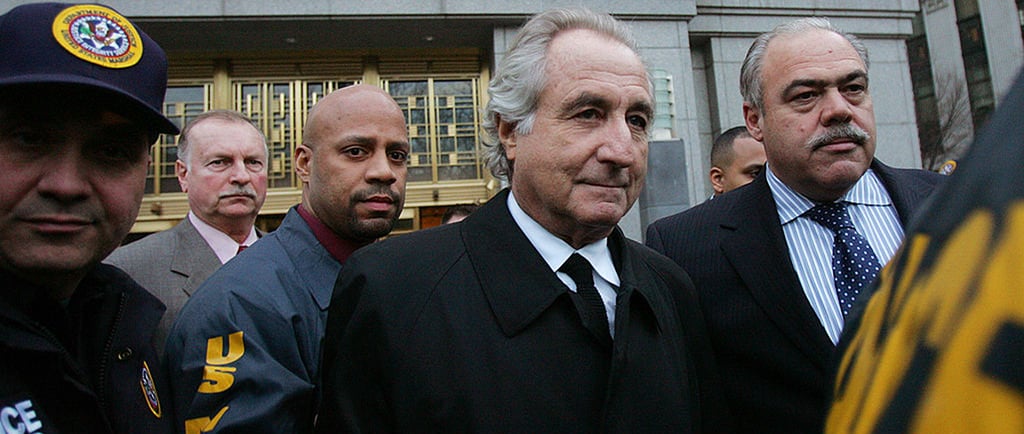Bernie Madoff: The Billion-Dollar Deception That Fooled the World
Bernie Madoff pulled off the largest Ponzi scheme in history, swindling $65 billion over three decades. Trusted by elites, he paid fake profits using new investors’ money until the 2008 crash exposed the fraud. His downfall ruined thousands of lives and highlighted deep flaws in financial oversight. Madoff died in prison — a stark reminder of unchecked greed and blind trust.
GOVERNMENTNEWS
Thrivevision
5/13/20253 min read


Bernie Madoff was once hailed as a financial genius — a Wall Street icon who seemed to have cracked the code of consistent investment returns. But beneath the surface of this image was the biggest financial fraud in history: a $65 billion Ponzi scheme that spanned more than 30 years. Madoff’s fall wasn’t just the end of a scam — it was a wake-up call to the financial world about trust, regulation, and unchecked greed.
The Rise of a Wall Street Legend
Madoff began his career in the early 1960s with just $5,000, earned from lifeguarding and installing sprinklers. He launched Bernard L. Madoff Investment Securities, which soon grew into one of the most respected firms on Wall Street. Madoff was considered a pioneer in electronic trading and served as the chairman of NASDAQ — gaining him immense trust within the financial elite.
His investment advisory arm, however, was hidden behind closed doors and operated separately. It was this secretive operation that turned into a financial black hole.
The Mechanics of the Fraud
At the heart of Madoff’s deception was a classic Ponzi scheme: he paid returns to earlier investors using the capital from new ones. What made his scheme different was its scale, longevity, and the elite clientele involved — from hedge funds and celebrities to universities and charities.
He promised stable returns regardless of market conditions, claiming to use a “split-strike conversion” strategy. In reality, there were no trades — only falsified statements that showed non-existent profits. Madoff's charisma and connections helped him avoid scrutiny. Clients, dazzled by consistent returns and his reputation, didn’t question the lack of transparency.
Ignored Red Flags and Regulatory Failure
Over the years, several red flags were raised. Independent financial analyst Harry Markopolos famously spent nearly a decade trying to alert the SEC to the fraud, calling it “mathematically impossible.” Despite presenting detailed evidence in 2000, 2001, and again in 2005, the SEC failed to take action. Their audits never dug deep enough into Madoff’s actual trading records.
Why? Madoff’s credibility was his shield. He moved in powerful circles, donated to political campaigns, and appeared to be above suspicion. His ability to fly under the radar exposed how blind trust and regulatory complacency can allow massive frauds to flourish.
The Collapse in 2008
The global financial crisis of 2008 became the undoing of the scheme. As panicked investors tried to withdraw funds en masse, Madoff couldn’t keep up. With no actual investments generating returns, he was cornered.
On December 10, 2008, Madoff confessed the truth to his sons, Mark and Andrew, who worked at the firm but were unaware of the fraud. They turned him in to the authorities. The next day, Madoff was arrested by the FBI and charged with securities fraud.
In March 2009, he pleaded guilty to 11 federal felonies and was sentenced to 150 years in prison.
Devastating Impact
The consequences of Madoff’s fraud were catastrophic:
Thousands of investors lost their life savings, including retirees, nonprofit organizations, and pension funds.
Several charitable foundations, such as those supporting Holocaust survivors and cancer research, were wiped out.
Individuals lost homes, businesses, and in some tragic cases, even took their own lives.
Madoff’s own family was torn apart. His son Mark died by suicide in 2010, and Andrew died of cancer in 2014. Madoff himself died in prison in April 2021.
The scandal led to sweeping changes in regulatory policies and oversight mechanisms, yet it remains one of the most haunting financial crimes of the modern era.
A Legacy of Greed and Blind Trust
Bernie Madoff’s case is not just a story about financial fraud — it is a study in human behavior. It highlights how greed, reputation, and overconfidence in systems can blind even the smartest investors. His scheme exploited not just financial loopholes, but emotional ones: the desire for security, trust in prestige, and fear of missing out.
Even seasoned institutions failed to ask hard questions because they didn’t want to jeopardize access to Madoff’s “magic.” In hindsight, the warning signs were glaring — but the illusion was too appealing to resist.
Conclusion: A Permanent Cautionary Tale
Bernie Madoff will forever be remembered as the man behind the world’s largest Ponzi scheme. But more than that, his story is a cautionary tale for regulators, investors, and society. It teaches us that trust without verification can be dangerous, and that no reputation should go unquestioned.
In a world where financial innovation evolves rapidly, Madoff’s legacy reminds us that transparency, accountability, and critical thinking must never be compromised.
Inspiration
Explore success stories and motivational journeys today.
Growth
Vision
© 2025. All rights reserved.
